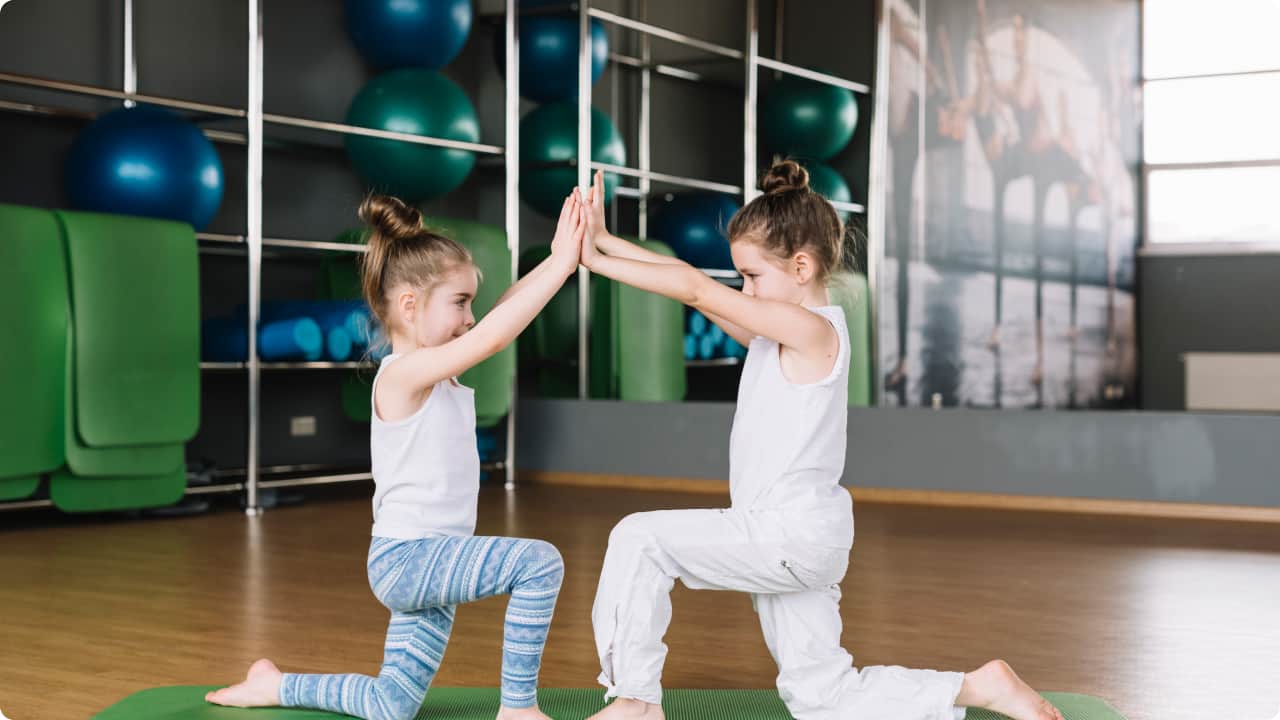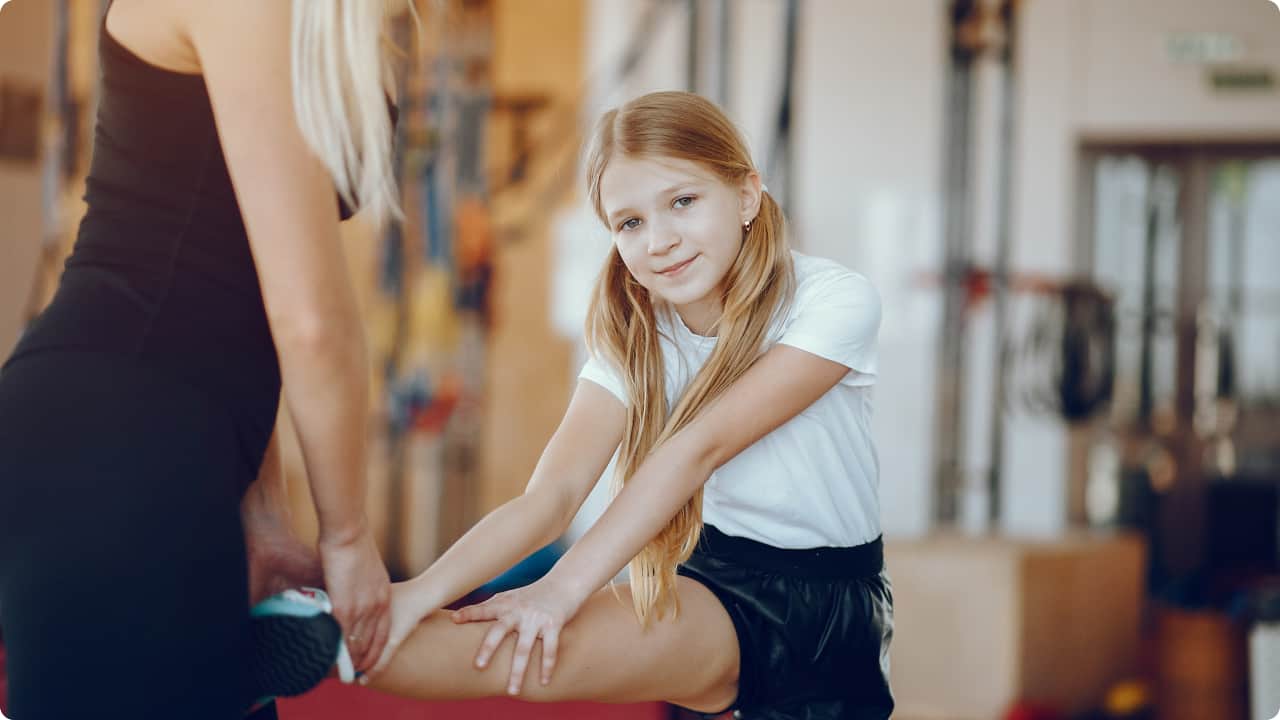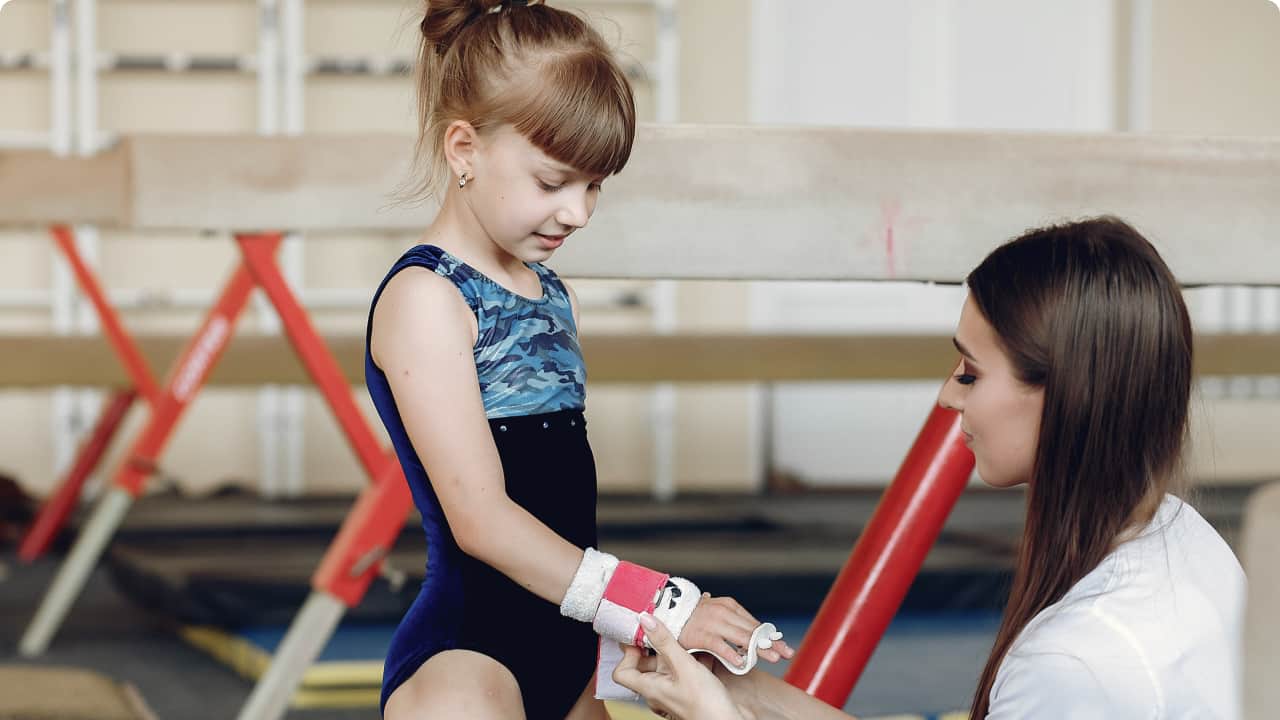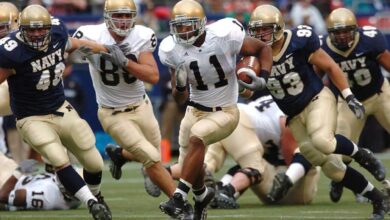What is the Best Time for a Child to Start Gymnastics?

You can locate gymnastics instructions for youngsters as young as two. However, many coaches advise that it’s good to wait until your child is five or six before enrolling.
For younger children, exordial classes should fixate on developing body vigilance and a love for the sport. Parent-child classes are a gentle way for children of 2-3 years to develop their physical coordination and aplomb. It accentuates climbing, crawling, and jumping.
Tumbling classes are slightly more physically demanding and are suitable for 3-5 ages. Basic gymnastics includes somersaults, cartwheels, and backward rolls to balance activities on a low beam. Once your child has mastered these early courses, they can move on to introductory gymnastics classes around age 6.
Other sports can withal avail prepare children for a commencement gymnastics class. Ballet, dance, soccer, and baseball help the kids to develop the same hand-eye coordination, balance, and legerity skills they’ll utilize in gymnastics.
Older children can also benefit from trying gymnastics, though the longer your child waits to begin, the less likely they will be able to compete with kids that have been training since toddlerhood.
Table of Contents
What’s the Last Stage to Start Gymnastics?
Gymnastics may be harder on your body the older you become, and you may be more of a target for injuries. Helping the toddlers to understand the importance of these core stability techniques will help them inspire to work on these techniques until they are second nature in their moves.
Recreational and competitive are two types of gymnastics. If your child is interested in competitive gymnastics, those gymnasts typically start at a young age because it takes years to work your way up.
Competitive gymnastics demands a lot of time and dedication. This is because coaches want to ensure the gymnast is comfortable performing routines to prevent losing points. Moreover, the harder you work towards your routines, the better you get, and then you jump from level to level. Each gymnastics level consists of different skills; the higher the level, the harder they become.
Recreational Gymnastics: When to Start?
In this case, start whenever you like! As gymnastics works on every muscle in your body, many people take a couple of gymnastics classes a week to stay healthy, fit, and in shape. Maybe your child wants to be a cheerleader and learn how to do a backflip or tumble; that is what recreational gymnastics is for! If you are having trouble getting fit or are out of shape, gymnastics is the best solution!
Many gyms have clinics each week serving children and adults to teach gymnastics skills out of pure enjoyment. These clinics will teach gymnastics skills and techniques at a much slower pace and allow you to participate in other sports and activities. Sometimes recreational gymnastics is substantial for athletes outside of gymnastics.
Whatever your situation, recreational gymnastics is an excellent way for your child to be involved with gymnastics and have a passion for the sport. Recreational gymnastics is a great tribulation for those still determining if they are ready to devote themselves to the sport. In many cases, coaches from the gym will visually perceive how your child is doing during the hours of recreation and might even invite your child to join their team.
Toddler Gymnastics to Prepare Kids
Competitive gymnasts have a reasonably narrow age window, especially for those striving to compete at the highest caliber. 2-3-year-old toddlers are yare to learn tumbling skills. The felicitous focus for these toddler’s gymnastics classes is learning the forms of kineticism and abilities that are the substructure of advanced gymnastics.
They’ll start with moves such as:
- somersaults
- backward rolls
- two-handed cartwheels
They might start getting on toddler-sized equipment, like ambulating on a low beam. In addition to advancing the kids’ body vigilance, physical skills, and flexibility, these classes set the foundation for how they’ll learn and interact with their peers.
Benefits of Gymnastics for Toddlers

Develop cognitive skills
The left and the right brain have to work in concert, so your toddler’s body and spatial vigilance make them aware of the world around them and acclimate better to it.
Develop strong and healthy bones
Gymnastics is a weight-bearing activity that can develop strong and healthy bones. Therefore, later in life, it reduces the signs of osteoporosis. Also, it helps prevent broken bones as your child ages and becomes more active.
Aids in strength development
By performing the body strengthening exercises that gymnastics requires, your child will build up their upper and lower body and overall core strength.
Increases coordination
Gymnastics comprises alignment skills that include standing, walking, and jumping. This will improve their coordination and make your child appear less clumsy. Furthermore, your child will be more agile in future sports.
Improves flexibility
Gymnastics will increment flexibility which truncates the chances of injury. This can help support proper body posture, which prevents spine problems.
Meet the daily exercise needs
According to the American Heart Association, a child needs at least 1 hour of daily physical activity. Participation in a gymnastics class will ensure your child meets their exercise requirements. Additionally, they will want to practice their gymnastics skills on off days to meet their daily exercise needs!
Prevent various diseases
Gymnastics aid in disease prevention by maintaining a robust, fit, and healthy body. This is the key to preventing obesity, heart disease, diabetes, asthma, and cancer. Teaching your toddler healthy behaviors in early life will likely stay with them later in life.
Gymnastics helps to bloom the flower of discipline
Gymnastic classes will provide discipline, self-control and enhance the skills of your toddler. In like manner, they will learn to work with others and accomplish plus stay on task.
Early gymnastics classes increase self-esteem
Gymnastics is a sport of mastering self-control which ultimately leads to enhanced self-esteem. Your child will learn from a young age that hard work and practice will pay off! Starting early, gymnastics will develop “stage fright” (helps to perform in front of a live audience).
Being a gymnast is fun
Being part of a gymnastics class will be a source of great fun for your child. Not only will it improve their social skills, but also they will get some great exercise at the same time! Finding fun activities to hold our toddler’s attention is required for a healthy lifestyle.
Increased endurance
The core strength and endurance of the kid’s body get a boost when they practice regular exercises. Gymnastics helps toddlers to grow a robust body that’s proof against injuries. Moreover, developing children’s physical, cognitive, and personal skills is essential as it delivers several impressive benefits in the long run.
Regularity in routine work
When your child is regularly involved in gymnastics classes or the gym, they get into a habit of routine work. Therefore, it gets easier for them to perform other activities that require the same dedication and devotion later in life.
Develops sportsmanship
Although gymnastics is a personal sport, it involves a gaggle learning environment. It develops sportsmanship and favorable relationship in children as they cheer for their peers and learn about healthful competition. It allows them to hone their social skills by interacting with gymnasts at different calibers of proficiency.
Why do Toddlers Need Gymnastics Lessons?

Gymnastics provides a perfect environment where toddlers can use their senses to develop coordination and confidence. Since the gymnastics environment is flamboyant, upholstered, fun – and secure – it’s impeccable for fortifying toddlers’ developmental progress.
In promoting your toddler gymnastics classes, be sure about the developmental progress of toddlers:
- Strength – development of muscles
- Flexibility – stretching
- Foundation – preparation for future activities
- Social Skills – taking turns, sharing, peer interaction
- Classroom Skills – listening, following directions, staying with the class
- Active Play – establishing exercise is fun
- Confidence – learning new skills, encouragement
- Vestibular – a sense of balance
- Proprioception – understanding space and position
- Courage – overcoming fears, trying hard things
Drawbacks of Gymnastics
- Injuries
- Affects toddlers emotionally
- Change of goals
Conclusion
Conversely, there is no specific age when you should commence gymnastics. It would be best never to let your age restrain you from doing what you want, as things always find their way to work out. Also, try giving your child pretty wear for their gymnast practice to enhance interest. Before making rash decisions, try recreational gymnastics first to ensure your child likes the intensity and idea of gymnastics. However, if you are still unsure, know that your gym’s toddler gymnastics coaches will answer your questions and provide feedback.
You Might like to Read:
